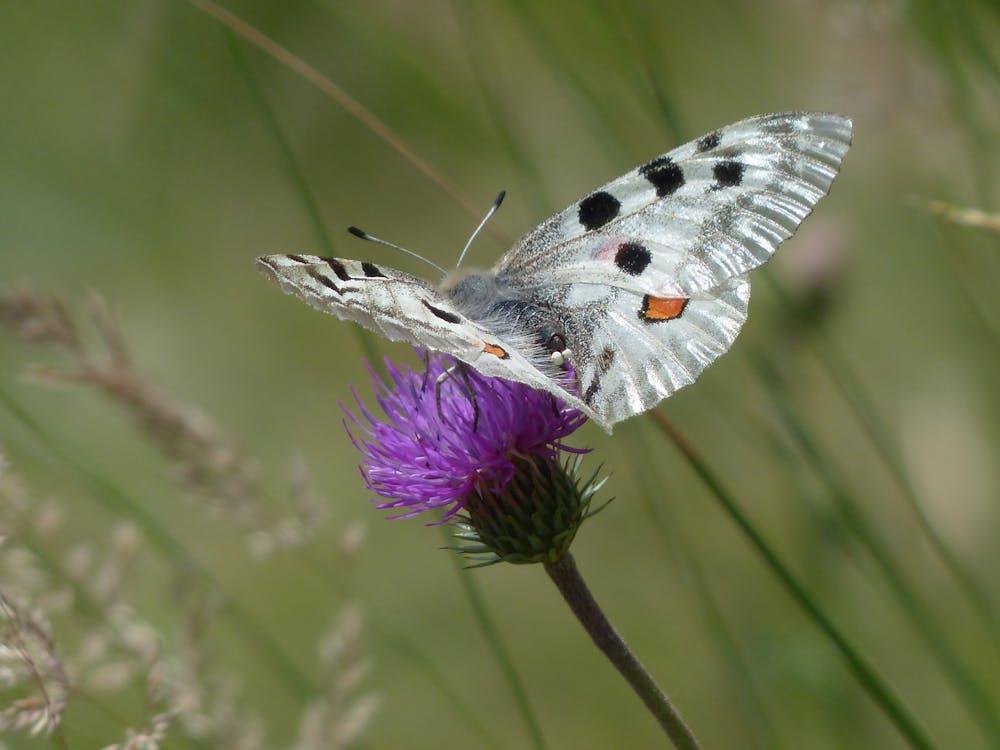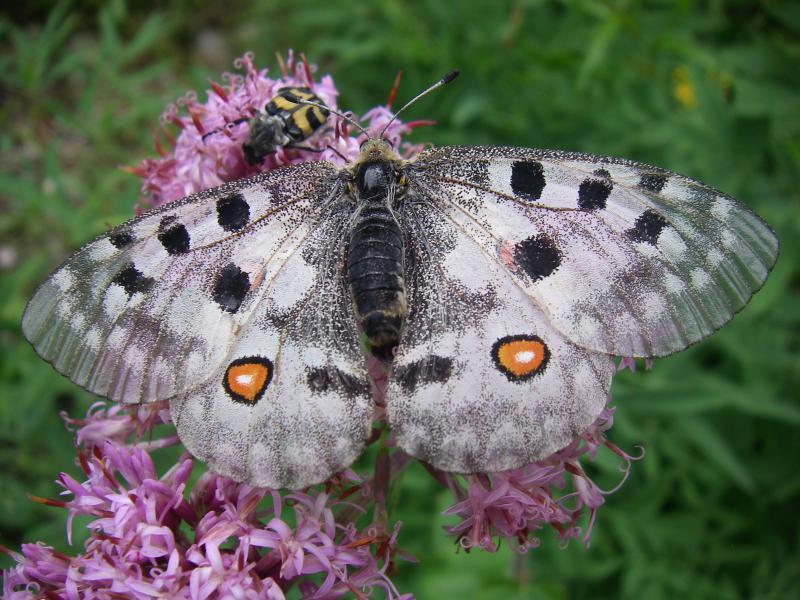
Timelines 10
Man and his Senses 10
Man and his Inventions 10
Geography 10
Fauna 10
Timelines 10
Man and his Senses 10
Man and his Inventions 10
Geography 10
Fauna 10

By instinct and by necessity, butterflies live on the edge. Their lives are governed by host plants, by the timing of flowering, by mowing schedules and grazing, by the light that falls on a limestone slope or a forest glade. Because their needs are small and very specific, they are also among the best indicators we possess for the health of a landscape. Where butterflies thin out, the soil, the hydrology and the mowing regime have already been altered; where they flourish, the small-scale structure of habitat has been kept intact. Two recent strands of work — the careful, institutional return of the Apollo in mountains in the Czech Republic and the rapid growth of community-driven butterfly recording in India — show how different societies are reading those signals and acting on them.
One clear statistic is a good place to start. Reports from Central Europe note the serious scale of insect loss in the region: insect numbers have fallen by as much as 75 percent over the past thirty years. That collapse is not just a vague warning; it is the context against which projects to restore butterflies must operate. If insects in general are in retreat, bringing back a demanding species like the Apollo requires more than a release event: it requires rebuilding a meadow from the ground up — with stonecrop present, grazing schedules adjusted, shrubs cleared and mowing timed to allow caterpillars to complete their cycle.
The Apollo is the emblem of that practical patience. Parnassius apollo — large, pale, marked with red eye-spots — once flew on slopes in the Czech Republic but was locally lost about a century ago. Reintroducing it has been a project of habitat reconstruction as much as of captive breeding. In June 2024, the JARO Group released fifty captive-reared Apollos into a prepared site in the Krkonoše (Giant) Mountains; the release followed years of habitat work and careful breeding, and it was planned as a test — the released males were meant to stay and show whether the restored conditions were sufficient. The project is part of a wider European-supported network that links partners across Central Europe, and its message is practical and simple: restore the meadow, restore the host plant, and only then consider release. Monitoring must follow.
Closely related is the quieter, incremental work to save the clouded Apollo (Parnassius mnemosyne), a specialized species of lowland woodland edges. Czech entomologists have documented severe local declines and responded with targeted interventions: increasing sunlight in selected forest patches, preserving the Corydalis food plants of caterpillars, and creating corridors between remnant sites. In one restored preserve the clouded Apollo’s numbers rose from a handful back to several hundred after management changes — an instance where a specific change in forestry practice (less logging, less broad herbicide use, controlled grazing) yielded clear biological results. The lesson is clear: butterflies respond to small habitat changes.
If Central Europe’s work has been corrective — to bring back what was lost — India’s work is largely protective and proactive. India still has extraordinary butterfly diversity, but that wealth sits beside powerful threats. Recent reports and field reviews warn that South Asian butterflies face rising risks from habitat loss, urbanisation, climate change and pesticide use; reports describe how mangrove and forest systems and urban greenspaces are all vulnerable, and they warn that large-scale policies and funding still prioritise large, popular animals over insect conservation. The consequence is obvious: remarkable diversity persists, but only so long as local habitats and the people who steward them remain vigilant.
Some conservation numbers are striking. Kaziranga National Park — known internationally for its rhino and elephant populations — was recently recorded to support 446 butterfly species, making it one of India’s most species-rich protected areas. This record serves two purposes: it underlines the sometimes-hidden diversity of even well-visited parks, and it demonstrates how careful survey work can change management priorities for protected areas that have long been seen only for their large mammals. Recognising butterflies in such parks invites managers to think about floral corridors, nectar sources and seasonal wetlands alongside the demands of large animals.
If institutional action matters, so does public engagement. India’s “The Big Butterfly Month”, the “Biodiversity Marathons” and an online platform for butterfly records have become a working network for butterfly knowledge. These initiatives turn casual sightings and photographs by school groups, photographers and walkers into usable records of where species occur. The Big Butterfly Month — first launched in September 2020 — and recurring Biodiversity Marathons link volunteers to a national Biodiversity Atlas; they supply coverage over time and place that formal surveys alone cannot provide. In a region where many species exist in narrow ranges, a single verified locality can change conservation decisions. Citizen science is therefore not just public participation; it is a primary source of data for policy and protection.
Practical conservation work — whether in Krkonoše or in Kaziranga — shares common prescriptions. For the Apollo the immediate tasks were botanical and managerial: secure stonecrop patches, time the mowing and grazing so caterpillars survive, keep shrubs at bay and restore open, sunlit meadows. For Indian sites the tasks are many but often simple: spare a field margin, protect a seasonal pond, reduce pesticide sprays along hedgerows, record sightings and publicise local occurrences so that managers see value beyond immediate economic returns. The day-to-day labour of conservation is ordinary: the correct mowing schedule, the retention of a few flowering roadside plants, the habit of photographing and uploading a single butterfly. Those low-cost acts add up.
Two different places show the same approach. In Czechia institutional science — breeding protocols, European projects, and coordinated habitat restoration — has been essential to reverse local extinctions. In India a distributed network of enthusiasts, data marathons and targeted surveys is filling a long-standing documentation gap and turning observation into protection. Both systems must operate together: reintroductions without habitat will fail; records without action remain nice but unused records. Each butterfly that returns, each new locality documented, is a small but telling sign that the landscape can still be read and repaired.
Sources
https://tinyurl.com/25ltkcgg
https://tinyurl.com/2ywq3y7h
https://tinyurl.com/27qxabwy
https://tinyurl.com/2cwu8h5f
https://tinyurl.com/225clwc3
https://tinyurl.com/2b33nt4e
https://tinyurl.com/289v3vv6
https://tinyurl.com/2y8uywmp
https://tinyurl.com/29jn9avz